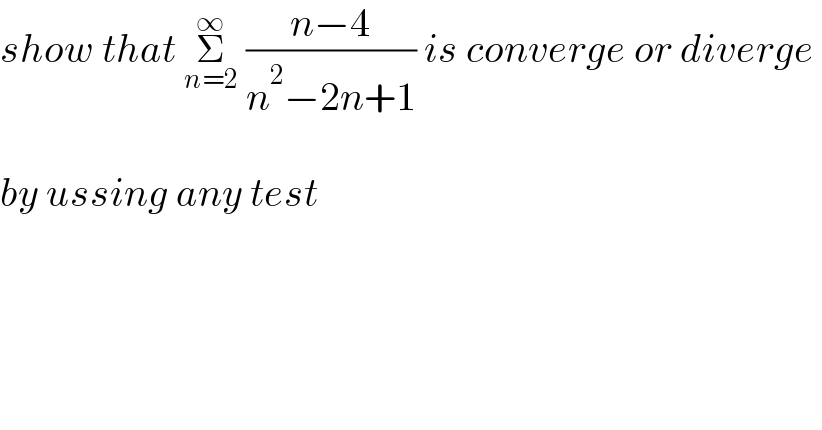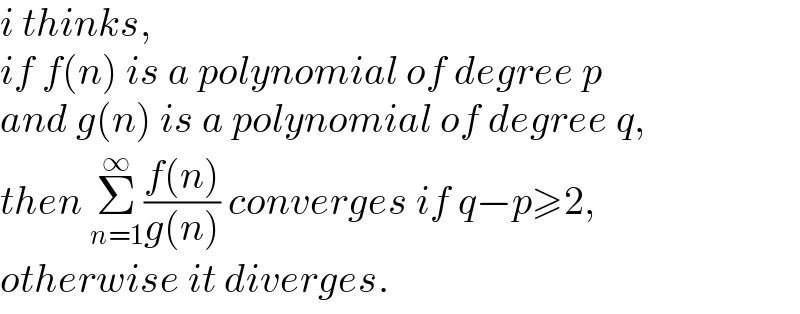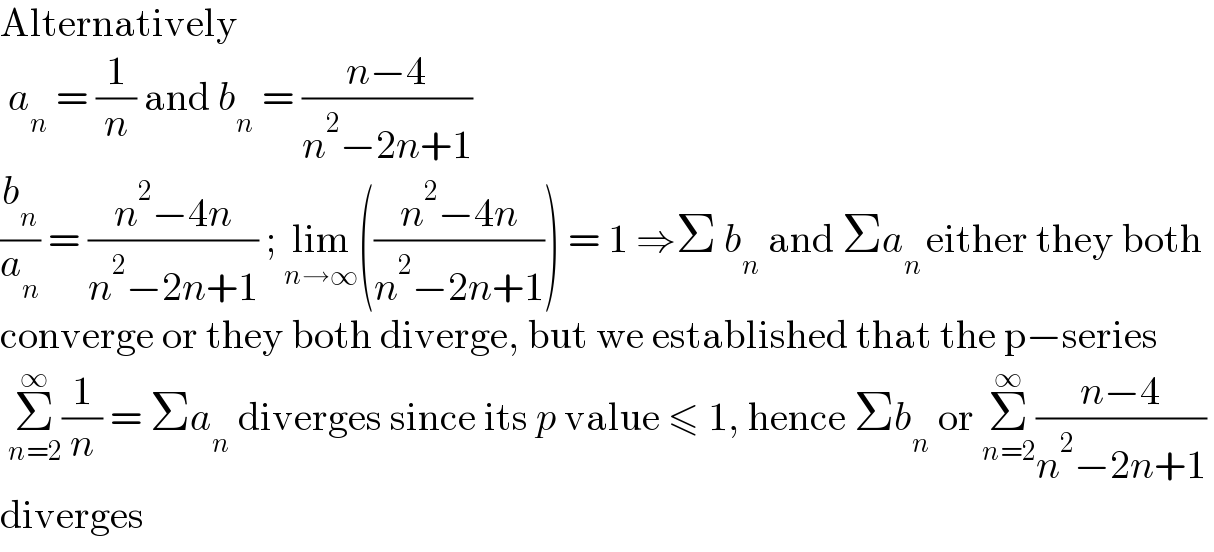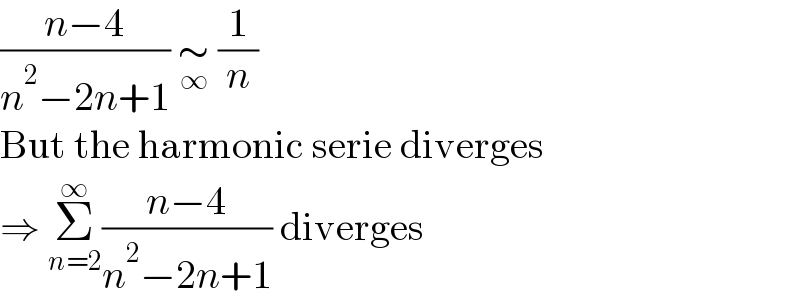
Question and Answers Forum
Question Number 136559 by mohammad17 last updated on 23/Mar/21

Commented by mr W last updated on 23/Mar/21

Answered by physicstutes last updated on 23/Mar/21

Answered by Olaf last updated on 23/Mar/21

Answered by physicstutes last updated on 23/Mar/21

Answered by physicstutes last updated on 23/Mar/21
![another alternative Σ_(n=2) ^∞ (((n−4)/(n^2 −2n+1))) = Σ_(n=2) ^∞ [((n−4)/((n−1)^2 ))] = Σ_(n=2) ^∞ ((1/(n−1))−(3/((n−1)^2 ))) Σ_(n=2) ^∞ ((1/(n−1))) another divergent harmonic Σ_(n=2) ^∞ [(3/((n−1)^2 ))] yet another divergent one so Σ_(n=2) ^∞ (((n−4)/(n^2 −2n+1))) is divergent from all universes.](Q136566.png)
